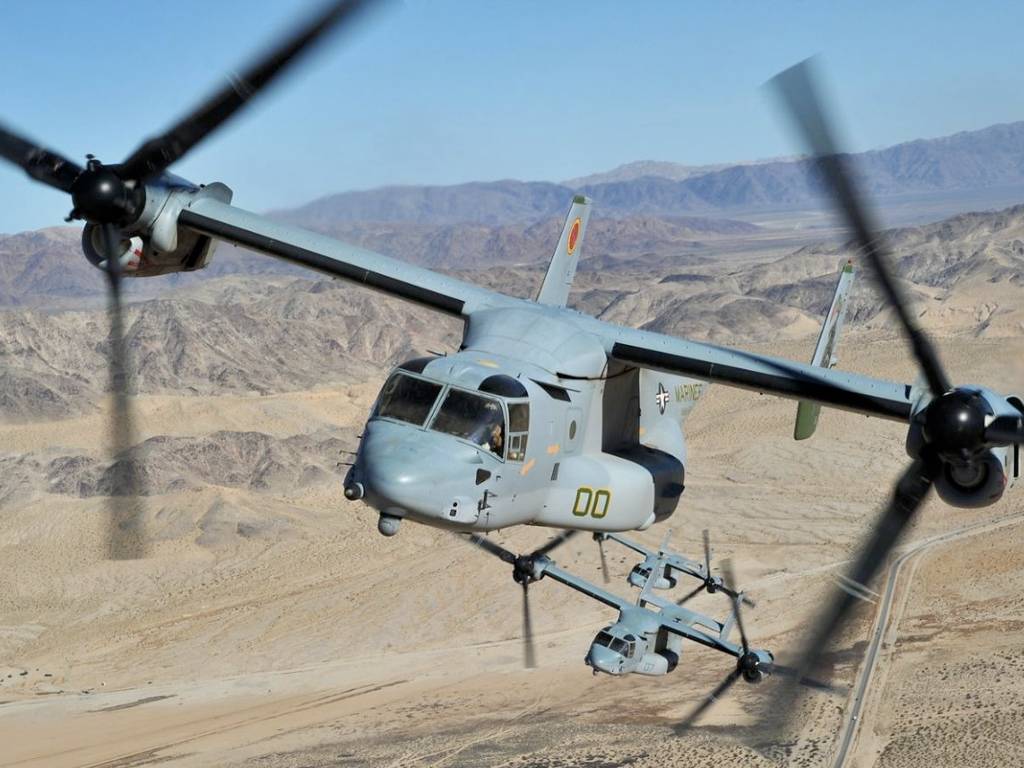
The U.S. Defense Logistics Agency has awarded the Bell-Boeing V-22 Osprey program office a $218 million support contract, bringing the total aftermarket support contracts for the tiltrotor to nearly $2 billion.
Advertisement
The one-year, $218.7 million contract modification awarded Nov. 29 is the first option of a potential five-year deal with Bell-Boeing for logistics and engineering support for the aircraft in service with the U.S. Navy, Marine Corps and Air Force.
In the past month, the U.S. Department of Defense has doled out more than $1.8 billion in support contracts for the Osprey airframe and its Rolls-Royce T406 engines. On Nov. 15, Rolls was awarded a $1.2 billion contract for engine sustainment support. Five days later, Bell-Boeing closed a $379.4 million deal for maintenance, repair and spare parts.
Work on the most recent contract runs through Nov. 30, 2020, and carries four more one-year options.
The V-22 celebrated the 30th anniversary of its first flight in March. It struggled through entry to service in 2007, but has since become a workhorse aircraft for the U.S. Marine Corps. A CV-22 variant is flown by the Air Force Special Operations Command.
Next year, the Navy will launch operations of the CMV-22 carrier onboard delivery aircraft to replace the C-2 Greyhound. That service in October established the San Diego, California-based Fleet Logistics Multi-Mission Wing (COMVRMWING) 1 as the first CMV-22 airwing.
In October, the global fleet of 375 Ospreys achieved a total 500,000 flight hours.
Advertisement
Now the Bell-Boeing joint program office is working to keep the Osprey operationally relevant for at least another 40 years. In constant operational demand in Iraq, Afghanistan and combat zones elsewhere, the aircraft rolled off the assembly line in dozens of configurations over the past decade.
The task now is to simplify training and maintenance through the Common Configuration Readiness and Modernization (CCRAM) program that aims to consolidate operational Ospreys from more than 77 configurations into fewer than 17 variants.
Of 129 MV-22 Block B aircraft — built between five and 15 years ago — at least four have been inducted into CCRAM, through which they will be brought up to a 2019 configuration through system replacements and overhaul at Boeing’s manufacturing facility outside Philadelphia, Pennsylvania. The work includes about 60 engineering change proposals to improve both reliability and capability.



